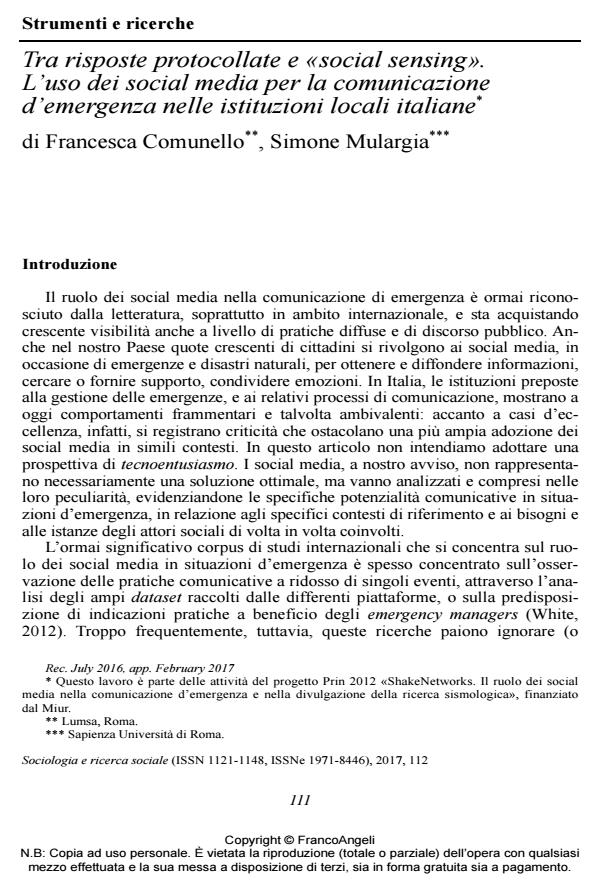Tra risposte protocollate e «social sensing». L’uso dei social media per la comunicazione d’emergenza nelle istituzioni locali italiane
Journal title SOCIOLOGIA E RICERCA SOCIALE
Author/s Francesca Comunello, Simone Mulargia
Publishing Year 2017 Issue 2017/112
Language Italian Pages 27 P. 111-137 File size 269 KB
DOI 10.3280/SR2017-112006
DOI is like a bar code for intellectual property: to have more infomation
click here
Below, you can see the article first page
If you want to buy this article in PDF format, you can do it, following the instructions to buy download credits

FrancoAngeli is member of Publishers International Linking Association, Inc (PILA), a not-for-profit association which run the CrossRef service enabling links to and from online scholarly content.
- Digital Services in Crisis, Disaster, and Emergency Situations Marica Spalletta, Dario Fanara, Paola De Rosa, pp.221 (ISBN:9781799867050)
- Research Anthology on Managing Crisis and Risk Communications Marica Spalletta, Dario Fanara, Paola De Rosa, pp.308 (ISBN:9781668471456)
Francesca Comunello, Simone Mulargia, Tra risposte protocollate e «social sensing». L’uso dei social media per la comunicazione d’emergenza nelle istituzioni locali italiane in "SOCIOLOGIA E RICERCA SOCIALE " 112/2017, pp 111-137, DOI: 10.3280/SR2017-112006